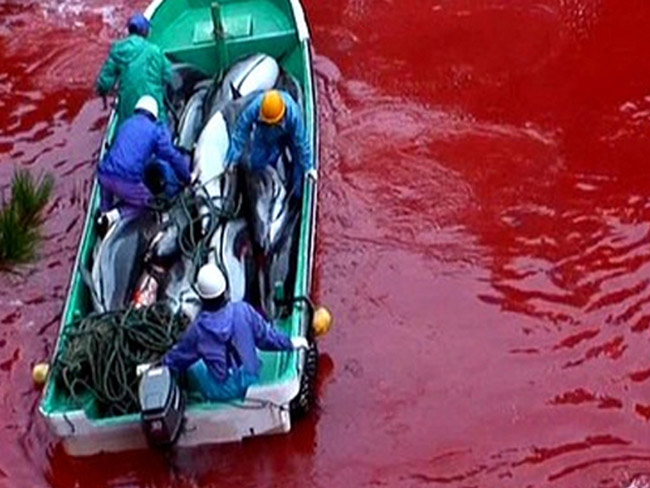
Those of us living on the Atlantic coast know there is a very large ocean out there off our beach, but do we stop to think about its importance to life on earth? Or to consider the importance of the oceans to life as we know it? I suspect not many of us give it much thought.
 But if you look at the earth from a great distance, you can see that oceans cover more than 70% of earth’s surface.
But if you look at the earth from a great distance, you can see that oceans cover more than 70% of earth’s surface.
Other than the sun, the oceans are the most important force affecting Earth’s climate as heat exchange between the ocean and atmosphere drive atmospheric circulation over the entire planet and modify air temperatures. The planet’s five oceans (and smaller water bodies) absorb 98% of solar radiation.
Surface currents transport nutrients and help determine the distribution of life in the ocean. They also redistribute pollution and hazardous materials that enter the ocean.
As if that is not enough, oceans and ocean life control the amount of greenhouse gases such as carbon dioxide in the atmosphere, with oceans holding 50 times more carbon dioxide than the atmosphere. Almost half the carbon dioxide put into the air by burning fossil fuels is absorbed by oceans.
Roughly half of earth’s primary production, that is the conversion of water, carbon dioxide, sunlight, and inorganic nutrients into oxygen and hydrocarbons, actually occurs in the oceans. Primary producers in the oceans are phytoplankton, which produce oxygen as a by-product. Plus, phytoplankton influence cloud formation, which affects the reflection of sunlight from earth, thereby moderating earth’s temperature.
Just to emphasize further the importance of the oceans, one billion people depend on fish as their primary food, and an untold number are dependent on fishing for work. More recently, modern medicine is studying the oceans and their life within to identify potential cures for HIV, Parkinson’s, Alzheimer’s, heart disease, diabetes, arthritis and other illnesses.
I think it is safe to say that the oceans are an integral part of life on earth. Yet humans continue to abuse the oceans and ocean life through a variety of violent acts. I’ve written previously about great amounts of human-generated pollution in the North Atlantic Garbage Gyre. This swirling mass of plastic, along with its ugly sister in the North Pacific, contain plastic that comes from humans on land who either don’t care or are too lazy to make sure their plastic gets recycled.
Man-made pollution is one thing. Direct and indirect slaughter of sea life to indulge human luxuries is quite another.
According to scientists, over 72 million sharks are killed each year in a gruesome display of violence as live sharks, with their fins cut off, are allowed to slip back into the ocean to suffer a horrific death. Shark fin soup is in high demand by Asia’s rising middle and upper classes seeking to demonstrate their new-found wealth from international trade imbalances with the west by paying up to $100 per bowl. (See the gruesome practice in action in the video at the foot of the article.)
Dolphin slaughter, as depicted in “The Cove” (the 2010 Oscar winner for best documentary), provides dolphin meat for primarily Japanese markets, even though the meat is known to contain dangerously high levels of mercury, cadmium, and PCBs.
Bluefin tuna and other species are fished nearly to extinction to meet international demand for sushi and other specialty foods. Coupled with more efficient technology, fishing industries around the world have reduced fish stocks of many important species by some 60 to 90 percent.
I have to ask, what are we doing and when we will learn that the oceans are not an inexhaustible source of good things? It is past time for every earth-dweller to make a pivotal change in direction to allow the oceans to recover to their former health and productivity. For without a concerted effort to fix the problems, life on earth as we know it will be vastly different, and that is not the legacy I want to leave for my family.
Next week I will focus on what we can do to protect the oceans from this downward spiral. I hope you join me.
![]()
Frank Gromling is the owner of Ocean Publishing in Flagler Beach. Reach him by email here.





























Yellowstone says
Frank-
I share your concern – but unfortunately when we look at the food sources and populations from Somalia to China – things are looking bleak. People who have not even a slurp of water, to those that will anything that will give sustenance; reptiles, dogs, cats, horses, and dolphin. Repulsive – yes – but these people are baely surviving.
Fortunately, however, we live a country that is rich in food resources – our population has choices. We also have the intelligence and foresight to develop better and newer food products.
Just like it takes a village to raise a child, it takes a nation to feed its people.
Remember the saying, “You give a man a fish and he eats for a day. Teach him to fish and will eat a lifetime”. We, you and I, need to teach the less fortunate that it is more than just fishing (a metaphor). We need to teach them to plant, cultivate, irrigate, a procreate new food sources – and not eat the seeds.
I look forward to your insight . . .
B. Claire says
There must be a ‘humanity’ gene that some just do not receive…e.g. the ones that can do these horrible atrocities to both animals and humans. It is clearly demonstrated here by ‘The Cove’ as well as in Stanley Milgram’s 1960s experimental findings that people would administer apparently lethal electric shocks to a stranger at the behest of an authority figure.
It sickens all who have even a modicum of humanity.
Each of us must do what we can…even if as little as signing petitions to stop these sorry acts.
Liana G says
Thank you again Frank! Reading this reminded me of the following article back in 2007. Our fiscally responsible gov’t spent $60,000,000 to clean up this man-made disaster and contributed to the extinction of several endangered species in addition to paying farmers $15,000,000 not to farm in order to reduce demand of goods.
Leaving No Tracks. By Jo Becker and Barton Gellman
Washington Post Staff Writers
Wednesday, June 27, 2007
“In Oregon, a battleground state that the Bush-Cheney ticket had lost by less than half of 1 percent, drought-stricken farmers and ranchers were about to be cut off from the irrigation water that kept their cropland and pastures green…First Cheney looked for a way around the law, aides said. Next he set in motion a process to challenge the science protecting the fish, according to a former Oregon congressman who lobbied for the farmers.[…]
Because of Cheney’s intervention, the government reversed itself and let the water flow in time to save the 2002 growing season, declaring that there was no threat to the fish. What followed was the largest fish kill the West had ever seen, with tens of thousands of salmon rotting on the banks of the Klamath River.[…]
Months later, the first of an estimated 77,000 dead salmon began washing up on the banks of the warm, slow-moving river. Not only were threatened coho dying — so were chinook salmon, the staple of commercial fishing in Oregon and Northern California. State and federal biologists soon concluded that the diversion of water to farms was at least partly responsible.
Fishermen filed lawsuits and courts ruled that the new irrigation plan violated the Endangered Species Act. Echoing Kelly’s objections, the U.S. Court of Appeals for the 9th Circuit observed that the 10-year plan wouldn’t provide enough water for the fish until year nine. By then, the 2005 opinion said, “all the water in the world” could not save the fish, “for there will be none to protect.” In March 2006, a federal judge prohibited the government from diverting water for agricultural use whenever water levels dropped beneath a certain point.
Last summer, the federal government declared a “commercial fishery failure” on the West Coast after several years of poor chinook returns virtually shut down the industry, opening the way for Congress to approve more than $60 million in disaster aid to help fishermen recover their losses. That came on top of the $15 million that the government has paid Klamath farmers since 2002 not to farm, in order to reduce demand.”…
http://voices.washingtonpost.com/cheney/chapters/leaving_no_tracks/